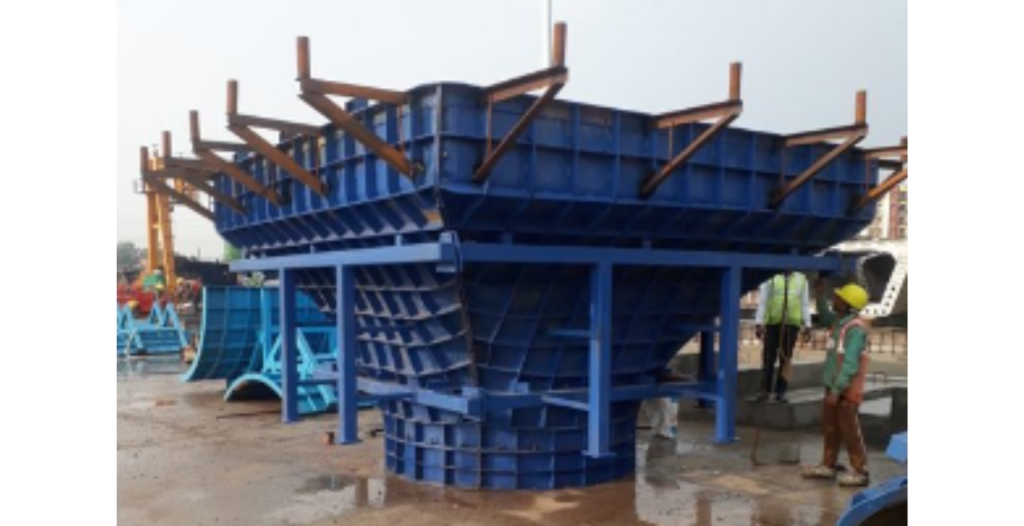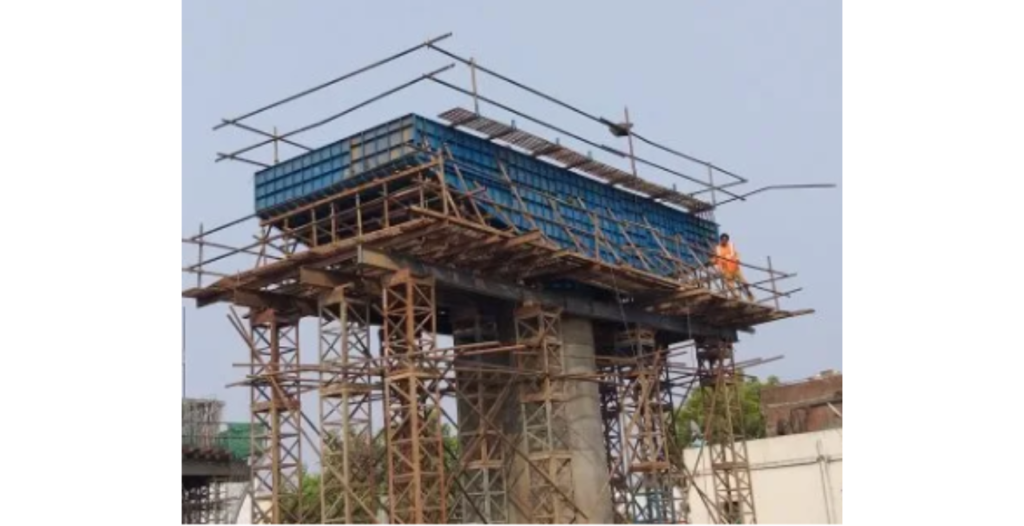CONSTRUCTIONS TECHNOLOGY & PRODUCTS
Pier Cap & Supporting Structures
| Formwork for Pier Cap and Supporting Structures plays a crucial role in the construction of bridges, elevated highways, and other infrastructure projects. These structures are used to support the weight of bridge decks and distribute it to the bridge piers. In this detailed overview, we will discuss the key aspects of formwork for pier caps and supporting structures, including their working principles, advantages, disadvantages, applications, materials of construction (MOC), and provide a summary. |

| 1. Working Principles: Formwork for pier caps and supporting structures operates based on the same principles as general formwork for concrete structures. The working principles include: |
| Support: The formwork supports the weight of wet concrete while it is poured and until it cures to a sufficient strength to bear its own weight. |
| Shape and Alignment: Formwork is designed to create the specific shape and alignment required for the pier cap and supporting structures. |
| Surface Finish: It can also impart the desired surface finish to the concrete, such as smooth or textured, depending on project requirements. |
| Removal: Once the concrete has achieved the required strength, the formwork is carefully removed, leaving behind the finished pier cap and supporting structures. |

| 2. Advantages: |
| Customization: Formwork can be tailored to accommodate various pier cap designs and supporting structures, meeting project-specific requirements. |
| Efficiency: Formwork expedites construction by enabling the rapid placement of concrete, reducing labor and time. |
| Quality Control: It ensures precision in construction, resulting in accurate dimensions and surface finishes for the pier cap and supporting elements. |
| Cost-Effective: Properly designed formwork can be reused across multiple projects, reducing material and labor costs over time. |
| Safety: Formwork provides a safe working platform for construction workers during concrete placement. |

| 3. Disadvantages: |
| Initial Cost: Fabricating or purchasing formwork can be costly, especially for complex or large-scale projects. |
| Labor-Intensive: Assembling, installing, and removing formwork can be labor-intensive, impacting project schedules. |
| Maintenance: Formwork requires regular maintenance to ensure it remains in good condition for reuse. |
| Environmental Impact: Disposable formwork materials can contribute to construction waste, whereas reusable materials may have a higher environmental impact due to production. |
| 4. Applications: Formwork for pier caps and supporting structures is primarily used in the construction of bridges, elevated highways, and similar infrastructure projects. It is specifically applied to create the following components: |
| Pier Caps: These horizontal concrete elements rest on bridge piers or columns and support the bridge superstructure. |
| Pier Shafts or Columns: These vertical components support the pier caps and distribute loads to the foundation. |
| Abutments: These support the ends of bridge superstructures and transfer loads to the ground. |
| Retaining Walls: In some cases, retaining walls may be considered as part of the supporting structure to address terrain and water flow. |
| 5. Materials of Construction (MOC): Materials used for formwork for pier caps and supporting structures can vary based on project requirements, but common materials include: |
| Timber: Traditional timber formwork is often used for smaller projects and is relatively cost-effective. |
| Plywood: Plywood is commonly used to face the formwork due to its smooth surface finish and durability. |
| Steel: Steel formwork is durable and can be reused multiple times. It is often used for larger and more complex projects. |
| Aluminum: Aluminum formwork is lightweight, corrosion-resistant, and reusable, making it suitable for high-rise construction and mass housing projects. |
|
6. Summary: Formwork for pier caps and supporting structures is a critical component in the construction of bridges, elevated highways, and infrastructure projects. It serves as a mold for concrete, supporting, shaping, and aligning the material until it achieves the required strength. Despite initial costs and labor-intensive aspects, formwork offers significant advantages, including customization, efficiency, quality control, cost-effectiveness, and safety. It is essential for achieving precise dimensions and surface finishes in pier caps and supporting structures. Formwork materials, whether timber, plywood, steel, or aluminum, are selected based on project requirements. Proper design, installation, and maintenance are crucial for successful formwork usage in construction. |


 Sales & Marketing:
Sales & Marketing:  Service Supports:
Service Supports:  Website:
Website: 